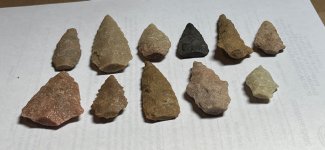mxdigger
Jr. Member
- Jun 30, 2013
- 66
- 129
- Detector(s) used
- Minelab Equinox 900
- Primary Interest:
- Relic Hunting
One of these days I hope I can find someone to explain that the purpose of a uni-faced point. And I know there are some people say that there is no such thing as a snapped base point and that they are just broken. I have a bunch of those and some I guess could be just broken but a few I have are to too perfect to be broken by accidental use. The uni-faced points have always been a mystery to me.
Amazon Forum Fav 👍
Upvote
3





